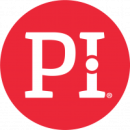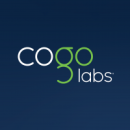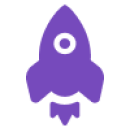Though company culture can’t be directly seen or tangibly measured, it is a force that proceeds to grow and evolve through the human experience. Celebrating big wins; collaborating on innovative ideas across departments; turning mission statements into core values; passing down long-standing traditions – these are all factors that develop a work environment into a company’s cultural identity.
However, unlike the absolute constant of a natural force like gravity, a company’s culture can fluctuate over time without proper guidance, transparency and input from leadership – and not always in the direction you want. Factor in an emotionally disruptive event like 2020’s pandemic, and the culture-building scales can tip at a moment’s notice.
According to Built In’s research, 65 percent of employees say that their company’s culture is a key factor when deciding to stay at their job. But what happens when the culture that took years of patience to build in person disappears overnight while people are isolated from the workplace?
According to Keri Pajer, vice president of HR business partnerships at Agero, something powerfully motivating.
“In going remote, employees were really empowered to drive change,” she said. “They took the thought of ‘we always do it this way’ and threw it out. It really opened a door to how a culture can be created – fast.”
And while adapting to remote and hybrid work models became the most common obstacle to navigate, it also opened companies up to variety of other possibilities. At LogRocket and Cogo Labs, listening to employee voices and incorporating their perspectives into everyday practices became essential to showcasing support regardless of distance.
Built In Boston caught up with Pajer, Parikh, and three other local professionals to discuss how they continued to forge company culture during the pandemic, and how they’re applying what they learned to come even closer together.
According to Pajer, being “human first” became a powerful force of motivation to restructure Agero’s company culture based on at-work personas and at-home individualism.
How did the pandemic and remote work change your understanding of culture-building within Agero + Swoop?
Culture isn’t something you can put your finger on. You can just feel and see the effects, which are shared by every employee. But you can’t dictate it like any other strategy. And generally, workplace culture adjusts and grows slowly. It takes time to infuse across an organization.
So, when you go to a remote environment, it can be really hard to understand , see and feel it because it’s all virtual. But with the pandemic, culture building was really accelerated in a way that most companies hadn’t seen before – because we were all “in it together.” In going remote, employees were really empowered to drive change. They took the thought of “we always do it this way” and threw it out. It was no longer an option. It really opened a door to how a culture can be created – fast.
How did you deliberately build upon your existing culture throughout 2020?
Because we couldn’t physically be together, we placed a high value on creating new types of personal connections among colleagues. Our communications and activities became more people-first rather than employee-first and adoption of digital tools really skyrocketed. We really embraced a journey of continuous listening to truly understand the needs of our Agero family and answer the hard questions. And with the lines blurred between who we each are as individuals “at work” versus “at home,” we became much closer and more intertwined as a community.
As an organization, we redefined how we worked to not only be productive, but informed. It can be too easy to use the virtual environment to become opaque. Instead, we became more transparent than ever before: we launched a brand-new intranet, initiated a regular cadence of communications activities, launched an ongoing Ask Me Anything series with leadership, deployed more comprehensive and frequent engagement surveys; the list goes on.
With the lines blurred between who we each are as individuals ‘at work’ versus ‘at home,’ we became much closer as a community.”
What lessons about company culture will you take forward beyond the end of the pandemic?
We realized fast that being human-first is really powerful, and it’s what has driven our organization forward. Work can’t just be business all day every day. Fun Slack channels, yoga sessions, financial wellness webinars and fitness challenges make an impact. We really began to understand each other – not because we read over email that a colleague had a baby, but because we saw that baby on Zoom.
We also know that balancing work and life is a priority, and that productivity looks different for everyone. We will continue to support, trust and respect how our people decide how they will deliver. Our people really came together and kept us going, continued to take care of customers, were gritty and agile, and figured out new innovative ways to solve problems.
When a company does culture right, you don’t have to ask them to show up – they just do. In this pivotal year, the Agero family really showed up. So, we’re taking not just pieces and parts, but a much richer, closer culture based on the employee voice. We’ve made a promise to each other that normally would have been years in the making.
In Zani’s experience of adapting to “the new normal,” waiting to roll back company culture wasn’t an option. Instead, The Predictive Index used it as a launching point to evolve their workplace environment into something even greater.
How did the pandemic and remote work change your understanding of culture-building within The Predictive Index?
As with many companies, The Predictive Index had to adapt its culture quickly in the face of Covid-19. The initial changes were perhaps the most challenging, as our employees took to home offices while contending with health and family concerns.
Even once we got our bearings as a remote-friendly company, our culture continued to evolve. We implemented no-meeting blocks to provide the flexibility for employees to care for children, take pets for walks or just take a break. We encouraged employees to take calls outdoors and enjoy the weather. In the spirit of remote work, we even hosted a virtual Office Olympics event, complete with scavenger hunts, trivia and plenty of friendly chirping.
At PI, we believe a business’s greatest asset is its people. The pandemic only further solidified that belief. Despite Covid-19’s challenges, the sheer talent and resilience of our team continues to prepare us for the future.
How did you deliberately build upon your existing culture throughout 2020?
As we acclimated to this new normal, much of the initial hesitancy began to dissipate. While many longed to return to the office and reconnect with their friends and peers, plenty of others were enjoying the flexibility of remote work.
It was clear, even early on, that we couldn’t afford to “roll back” our culture. There was a shared interest – from senior leaders to individual contributors – to use this new culture as a launchpad for something even greater. So, we made the decision to implement three post-pandemic working options: Field (working entirely remote), Flow (splitting time between the office and home), and Studio (working primarily in the office). The future of work is hybrid, and we wanted to honor that – no matter where our employees are located.
The other area where we made strides was inclusion. Our Change@Work program, created in 2020, was designed to empower employees at all levels to propose ideas for positive workplace change. From an internal speaker series to an audit of our product and marketing materials, these projects aim to enrich not just our culture, but the entire talent optimization community.
It was clear, even early on, that we couldn’t afford to ‘roll back’ our culture.”
What lessons about company culture will you take forward beyond the end of the pandemic?
2021 continues to test cultures everywhere. Between the Delta variant, the advent of hybrid work, and the ongoing Great Resignation, the stakes are high. In our 2021 People Management Report, we surveyed nearly 2,000 employees across more than 15 industries. According to the study, 58 percent of those with a burned out manager say team members are thinking of quitting their jobs in the next year.
To retain top talent, stave off burnout and keep people safe, leaders must be clear on their strategy. They must also be confident in their ability to see that strategy through. Of course, strategies tend to evolve, and so leaders must be willing to stay agile amid any market shifts.
Talent optimization is our way of tackling these pressing issues. By encouraging awareness of our most prominent behavioral traits, our leaders can build teams where everyone feels valued and engaged. And these dream teams are what make PI’s culture so worthwhile.
After struggling at first to being apart while going remote, Parikh said his team had the opportunity to consider what was most important to their culture at Cogo. They formed a list of leadership principles: 11 actions that highlight what it means to be part of their community.
How did the pandemic and remote work change your understanding of culture-building within Cogo Labs?
Culture building, like most things at Cogo, was a product of our collective drive to create immense impact amplified by our in-office culture. Folks at Cogo are really good at creating plans, building alignment and generating impact – it’s in our DNA. However, when the pandemic hit, we couldn’t have imagined how quickly alignment between people could suffer when we weren’t together. Meticulously crafted plans became difficult to write, and even more difficult to execute.
When it came to aligning on the culture investments for the next few quarters, we knew that the standard processes wouldn’t cut. The pandemic highlighted a need for us to understand how to build alignment without being next to each other.
How did you deliberately build upon your existing culture throughout 2020?
While the move to remote work was wildly disruptive, it presented us with an opportunity to take a step back and document what mattered most about the Cogo culture. When sitting across from each other, it was much easier for us to communicate a sense of common purpose and create a sense of community. With the absence of that natural togetherness, our leadership team seized the opportunity to put their heads together and document the “unwritten” tenets that made our culture special.
After several brainstorming sessions, we walked away with what are now our leadership principles: a list of 11 actions that illustrate what it means to be a member of the Cogo community. Throughout the pandemic, we’ve woven these leadership principles into all corners of our company, from all-hands meetings to coffee chats. These principles have been a great way to remind ourselves what our culture is and how to embody it agnostic of location.
My two favorite leadership principles are the fearlessness to “take big swings” and the tenacity to “make moonshine” with limited resources.
The pandemic highlighted a need for us to understand how to build alignment without being next to each other.”
What lessons about company culture will you take forward beyond the end of the pandemic?
Of all the things we learned, empowering our people managers to be decision makers during ambiguous times will last beyond the pandemic. We’ve taken these uncertain times and used them to propel innovation into a new kind of corporate culture, one with a less rigid framework and more manager autonomy.
Our leadership team has been consciously choosing to empower our people managers. They have more autonomy to define what good looks like for their teams and have been armed with the latitude to make it happen. Our frontline managers are driving the decisions that matter most for our employees, like their team working norms, which will continue to be a cornerstone of our high-impact culture well beyond the end of the pandemic.
In Ianelli’s experience at Cybereason, embracing flexibility after going remote helped develop a supportive and welcoming environment for exactly who their team members are as people – at home and at work.
How did the pandemic and remote work change your understanding of culture-building within Cybereason?
Prior to the pandemic, Cybereason offered an in-office work experience. However, the pandemic made us realize how to motivate and engage our people remotely – and we’ve thrived!
We offered Zoom paint nights for global teams, sending canvas and paint to employees’ houses to have a fun evening with colleagues. We began hosting all-hands meetings with our C-suite weekly and have learned so much about our employees as we give different people throughout all levels of the organization the stage on a weekly basis. We’ve been supportive of managing kids and pets in the background on Zoom, showing that we all have lives outside of work.
Our eNPS score skyrocketed during Covid-19 and we truly believe it’s the support we offered all our people in managing through the pandemic, along with a little fun!
How did you deliberately build upon your existing culture throughout 2020?
We instituted recommendations for team building and then physically scheduled the events for the leaders and their teams – from bingo to wine tastings, from flower arrangement classes to whiskey tastings, from Zumba to kickboxing classes, we figured out how to host a wide variety of team-building events remotely. We tried to build fun into the normal day-to-day experience, as Zoom fatigue is real.
We’ll never go back to being in the office five days a week.”
What lessons about company culture will you take forward beyond the end of the pandemic?
We’ve learned how we can really thrive while working remotely, and we now know that we can hire the best talent wherever they reside. We no longer require our employees to be close to one of our offices for many of our positions. We know how to engage our people and support them and their families in the new digital world. We’ll never go back to being in the office five days a week. We know our people want more flexibility and we’ve proven we can operate digitally and be successful and happy.
By fostering virtual social interactions outside of “business as usual,” Cotter said that it better helped her teams at LogRocket listen to what employees needed in order to feel supported and show up for them every step of the way.
How did the pandemic and remote work change your understanding of culture-building within LogRocket?
We needed to be more deliberate about how we interact with each other, both professionally and personally. Impromptu connections, which were taken for granted before, were harder to come by. We could no longer rely on organic conversations over lunch or at the cold brew keg to foster connections between our employees, and we needed to find other ways to convey the LogRocket vibe once our (quintessential tech) office shifted to fully remote.
How did you deliberately build upon your existing culture throughout 2020?
We knew we needed to be explicit and intentional about the ways we interact. Luckily, we had already adopted many collaborative tech platforms (Zoom, Slack, Airtable, Google suite, Quip) so we could continue our “business as usual.” However, we wanted to make sure the social connections and recognitions were still happening.
We set up regular virtual events like whiskey tastings, hot sauce making classes and paint nights. We started sending monthly gifts from women or minority-owned businesses to employees as a thank you for all of their hard work and dedication to LogRocket. And for onboarding, we made sure new employees received all of their equipment and swag prior to their first day, and took care to make sure they had a robust schedule of trainings and meetings their first week.
Listen to your employees and incorporate their perspectives whenever possible.”
What lessons about company culture will you take forward beyond the end of the pandemic?
Listen to your employees and incorporate their perspectives whenever possible. Be intentional about what is communicated to allow for maximum transparency. Explicitly state the implicit tenets of your company’s core values and how you treat your people. They need to hear that you support them, that you as a company acknowledge the variety of feelings they’re experiencing, and that while things will not be perfect, you are committed 100 percent to supporting them.














